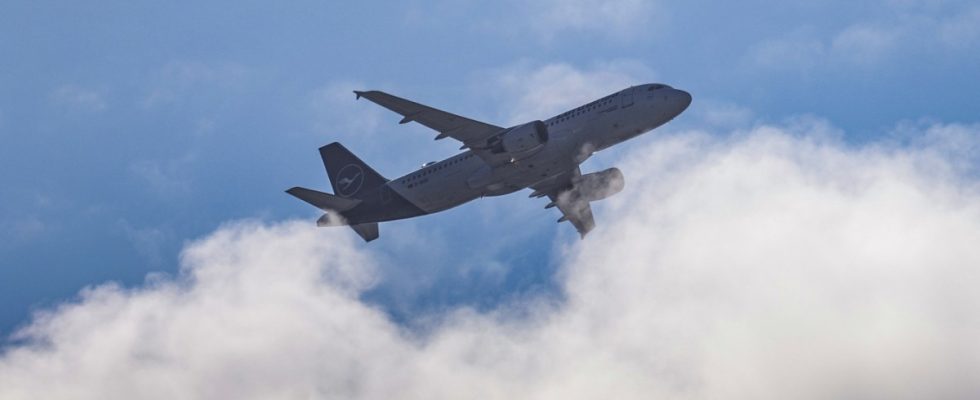The seat belt signs have gone out and the plane has reached its cruising altitude. Blue sky outside the window, not a storm in sight. But then the plane drops first to the left, then to the right. Passengers who have just stood up stumble, seeking support on armrests, luggage compartments and seats. The flight continues bumpy. The seat belt signs light up again, better safe than sorry.
Anyone who experiences something like this has encountered turbulence in clear air during a flight, caused by fast wind movements – impossible for pilots to detect beforehand. Like meteorologists now in the specialist magazine Geophysical Research Letters to report, such turbulences now occur much more frequently than they did a few decades ago. The team led by Mark Prosser from the University of Reading in Great Britain suspects climate change to be the most likely cause of the increased unrest in the air layers.
The researchers had looked at global readings of wind speeds and temperatures since 1979. Based on this data, the team estimates that moderate turbulence over the North Atlantic has increased by 37 percent since then, and that severe turbulence is even 55 percent more common than a few decades ago. At an average point 12,000 meters above the North Atlantic, the typical cruising altitude for long-haul flights, turbulent conditions prevailed for a total of 467 hours a year in 1979, compared to 547 hours in 2020. The group argues in its technical paper that the risk of flying through such turbulence when traveling between Europe and North America is also increasing.
The risk of turbulence is particularly high over the ocean
Several other studies had already come to the conclusion that global warming increases turbulence in the atmosphere. So warned a 2017 paperthat atmospheric turbulence could be three times as common in the second half of the 21st century as in the pre-industrial era. Presumably, climate change is causing increased wind shear to occur in the area of the jet stream, a band of high-altitude winds that wraps around the planet. These fast horizontal or vertical gusts of wind then create the dreaded turbulence. Many flight routes follow the jet stream to save travel time.
In the US alone cause turbulence every year Damages between $150 and $500 million, for example through material fatigue on aircraft, more maintenance work or lost work after turbulent flights. In addition to clear air, turbulence can also occur near thunderstorms or above mountain ranges. However, these types of turbulence can be reasonably estimated in advance, and pilots can adjust their aircraft’s itineraries accordingly. However, pilots usually only recognize clear air turbulence when they are in the middle of it with the aircraft.
In some regions the risk of clear air turbulence is much more pronounced than in others. In addition to the North Atlantic, turbulence has also increased significantly over the USA and on the north-east coast of Brazil. The researchers working with Mark Prosser also observed an increase over North Africa, the Mediterranean Sea and Europe, while the risk over Southeast Asia has tended to decrease. The effect is particularly pronounced over oceans, the scientists write, because the jet stream blows fastest here and because temperature differences between land and water contribute to wind shear.
Atmospheric scientist Paul Williams, who was involved in the study, explains in a statement from the University of Reading that there have been increasing signs over the past ten years that climate change will increase turbulence in clear air in the future. “Now we have evidence that this increase has already started.”

